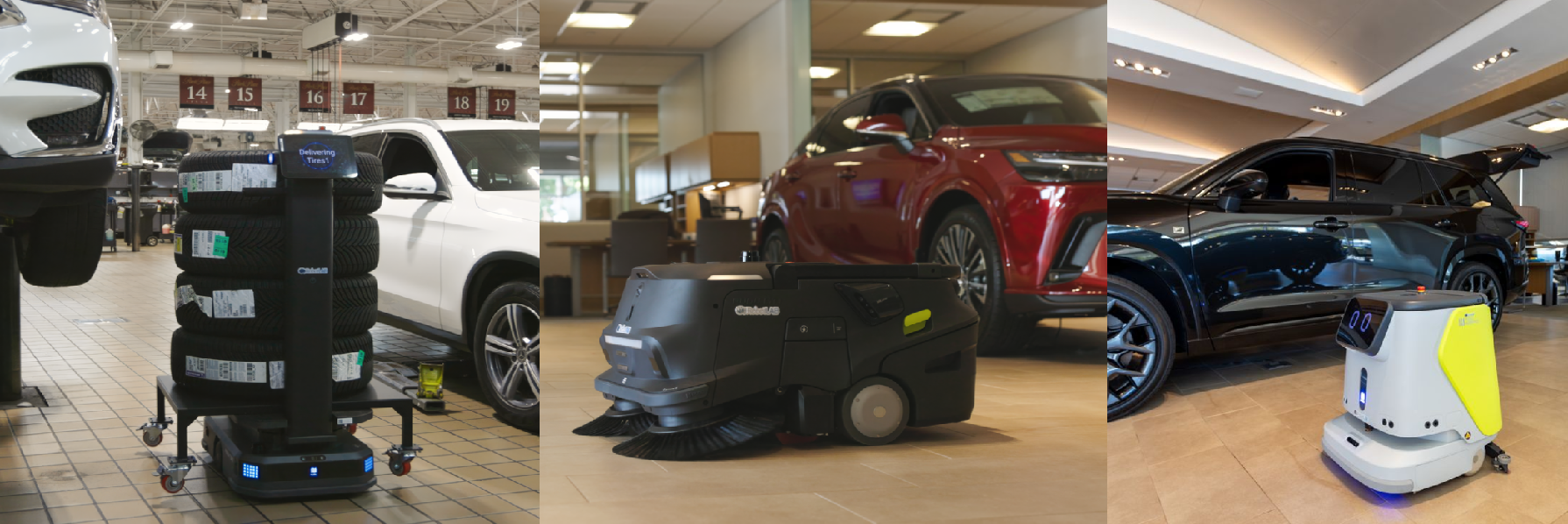Ultimate Guide To How Car Dealerships Can Boost ROI with Robotics
Jun 27, 2025
In today’s highly competitive automotive retail environment, car dealerships are increasingly turning to automation to reduce costs and improve service. One of the most effective strategies emerging today is the integration of robotics into dealership operations—especially using delivery robots for front-of-house and logistics tasks.
Robotics is no longer just futuristic. It’s a practical investment delivering measurable ROI, boosting both efficiency and technician satisfaction.
Key Benefits of Robotics for Car Dealerships
Robotics offers value across departments—from showroom floors to service bays. Here’s how:
1. Enhanced Customer Experience
Robots can engage customers, offer dealership tours, answer FAQs, and display vehicle specs—providing an interactive, premium experience. This increases dwell time and improves lead capture.
2. Automated Logistics & Delivery
Delivery robots can seamlessly handle internal parts transportation between service areas and inventory rooms. This minimizes human downtime and accelerates service turnaround.
3. Operational Efficiency
From autonomous floor cleaning to consistent security patrols, robots take over repetitive tasks that are prone to error when handled manually. This allows staff to focus on higher-value services like upselling or personalized sales.
4. Reduced Labor Costs
Deploying a single robot for cleaning or parts movement can replace or supplement multiple manual hours, especially valuable amid current labor shortages.
5. Marketing Differentiation
Car dealerships using robots send a strong signal of innovation and tech-forward service. It enhances the brand and improves customer trust and perception.
Real-World Insights: How Delivery Robots Transform Dealership Operations
At the heart of a dealership’s success is technician productivity—and delivery robots are proving to be a powerful tool to unlock it. In a recent deployment example, a service center reported multiple layers of value added by replacing parts runners with a robot.
Key operational improvements included:
-
Time saved per technician adds up fast: Just saving 4 steps per part run—equivalent to about 5 seconds—can scale up to over $10,000/year saved across 20 technicians.
-
Reduced downtime and distractions: Techs previously spent 15+ minutes chatting at the parts counter per trip. Delivery robots eliminate the temptation and keep focus on the work.
-
More wrench time equals more revenue: By automating parts delivery, techs spend more time with vehicles, resulting in faster service throughput and higher profitability.
-
Improved ergonomics and injury prevention: Carrying heavy items like batteries takes a toll, especially on senior techs. Robots reduce strain and support team longevity.
-
Accelerated onboarding for younger techs: Delivery robots reduce the physical demands on newer, less experienced apprentices, making it easier to integrate them productively.
-
Clear business case for managers: Idle technician time costs roughly $3.14 per minute. Delays of just 20 minutes per tech can quickly exceed $60—a figure that compounds across an entire team, every day.
-
Culture shift toward innovation: Senior staff and managers sometimes resist change, but when the robot’s value is seen in daily time saved and better team dynamics, buy-in rapidly follows.
-
Robots enhance teams, not replace them: Rather than hiring parts runners, dealerships can reallocate budget to training apprentices or scaling service delivery—one of the few tech investments that pays for itself through labor efficiency.
How Can I Calculate ROI from Robotics?
Understanding ROI is crucial. Here’s a simple breakdown:
1. Calculate Savings
-
Labor reduction (manual transport, janitorial work, front-desk tasks)
-
Time savings (more service jobs per day = more revenue)
-
Error reduction (accurate part delivery, inventory handling)
Example:
If your service team handles 25 jobs/day, and a robot saves 6 minutes per job, that’s 2.5 hours saved daily. Multiply by monthly labor cost, and the robot easily justifies its price within months.
2. Factor in Revenue Boost
-
More test drives completed
-
Higher close rates due to better service
-
Faster service means more throughput
Formula:
ROI (%) = [(Revenue Gains + Cost Savings – Cost of Robot) / Cost of Robot] × 100
What to Consider Before Deploying Robotics
Before jumping into robotics, evaluate these critical points:
1. Workflow Compatibility
Can the robot easily navigate your showroom or service bay? Choose robots with flexible programming and mapping capabilities.
2. Integration
Can it connect to your DMS, CRM, or scheduling platforms for alerts, updates, or service ticket triggers?
3. Environment Readiness
Do you have clean, accessible floor space and Wi-Fi coverage for autonomous robots to navigate effectively?
4. Training & Support
Choose a vendor that offers installation, training, and ongoing service support. RobotLAB, for instance, provides full deployment and service packages tailored for car dealerships.
The Bottom Line: Smarter Dealership
Integrating robotics into your dealership is not just about automation—it’s a strategic move to:
-
Cut costs
-
Improve efficiency
-
Enhance customer engagement
-
Generate measurable ROI
Whether you start with a delivery robot or introduce concierge robots in the showroom, the business case is strong—and the technology is mature.
Ready to Transform Your Dealership with Robotics?
Scroll down to speak with a specialist in one of our many locations, or Contact RobotLAB global specialists for a custom ROI analysis and explore how delivery robots can drive operational excellence and brand differentiation for your dealership.









 Too much to read? Don't have time?
Too much to read? Don't have time? 

.webp?width=124&height=124&name=image%20(1).webp)
.webp?width=169&height=87&name=image%20(2).webp)













